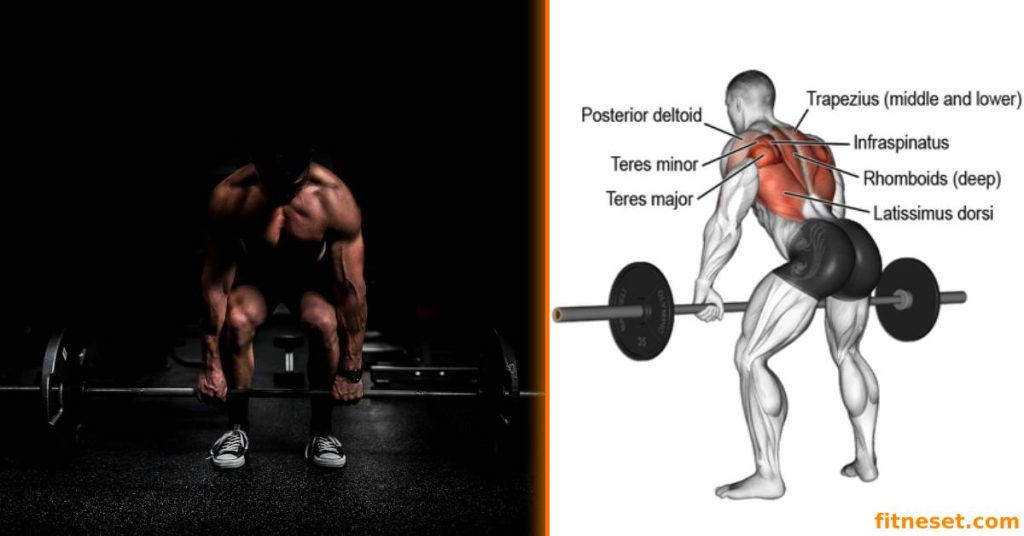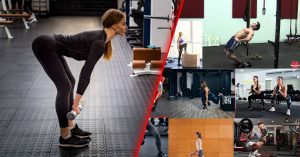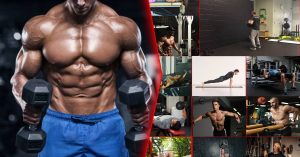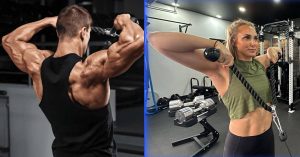Have you ever felt stuck in your deadlift journey, no matter how hard you push? It’s a common frustration, but the solution might be simpler than you think: deadlift accessory exercises.
These are the special moves that give your deadlift a boost, focusing on the parts of the lift that need extra work. Let’s dive deeper into why these exercises are your secret weapon for deadlift success.
Table of contents
MORE keyboard_double_arrow_down LESS keyboard_double_arrow_up
The Importance of Deadlift Accessory Exercises
Deadlift accessory exercises are more than just additional workouts; they’re the key to unlocking your full lifting potential. Here’s why:
- Every lifter has weak spots. Accessory exercises target these areas, making your whole lift stronger.
- By balancing muscle development, you’re less likely to get hurt. A stronger body is a safer one.
- Stuck at the same weight? These exercises help you push past those limits.
So, what makes these exercises so special? They focus on the exact muscles and movements you need for a better deadlift. Imagine having a tool that precisely fixes your lifting struggles. That’s what deadlift accessory exercises offer.
How To Choose Assistance Exercises For The Deadlift
Picking the right exercises can feel like looking for a needle in a haystack. But, it doesn’t have to be. Here’s a simple guide to finding your perfect match:
- Identify Your Weak Spot: Is lifting the bar off the ground tough? Do you find the mid-lift hard, or is locking out the challenge? Pinpointing where you struggle the most is step one.
- Match Exercises to Your Needs: Once you know your weak spot, choose exercises that tackle that specific problem.
Discovering Your Weak Spot
Figuring out where your deadlift needs work might sound tricky, but it’s all about paying attention to your lift. Here are some tips:
- Off the Floor: If the bar feels glued to the ground, your issue might be at the start.
- Past the Knees: Struggling in the middle? This is a common sticking point.
- Locking Out: Trouble at the top? It’s all about the finish.
Assistance Exercises For Weak Spots

Bottom Phase – Weakness Off Of The Floor
Struggling to lift the bar off the floor can feel like an epic battle against gravity. This crucial starting phase often highlights a lack of quad strength or an incorrect setup, which can severely limit your lifting potential. Deadlift accessories designed to bolster your leg drive and improve your lifting technique are not just helpful; they’re essential.
Unlocking the Power of Your Quads
To address weaknesses off the floor, consider these targeted strategies:
- Paused Deadlifts: These force you to stop (or pause) just after lifting off the ground. This pause builds explosive power and strengthens the initial lift phase.
- Leg Presses: Directly targeting your quads, leg presses build the necessary strength to kick off the deadlift with solid power.
Technique is Key
Improving your setup is crucial. Even with strong quads, a poor setup can sabotage your lift from the start. Practice the initial lift-off with attention to your form, ensuring you’re in the strongest position to begin the lift. This means setting your feet correctly, keeping your back straight, and engaging your core before you even pull.
Mid Phase – Weakness At The Knees
Getting stuck at the knees is like hitting a wall mid-lift. This phase requires a seamless transfer of power from the lower body to the upper body, calling for strong glutes and hamstrings. The right best deadlift accessories can transform this weakness into a strength.
Building a Bridge Over Troubled Knees
Consider incorporating these exercises into your routine:
- Romanian Deadlifts: By focusing on the eccentric (lowering) part of the lift, these strengthen your hamstrings and improve your ability to transition power above the knees.
- Glute Bridges: Directly targeting the glutes, these exercises ensure your powerhouse muscles are ready to take over and propel the bar upward.
The Transition Challenge
Mastering this mid-lift phase is about more than just muscle; it’s about smooth power transition. Training your body to efficiently shift effort from quads to glutes and hamstrings is crucial for overcoming this common bottleneck.
Top Phase – Weakness At The Lockout
Reaching the top but struggling to lock out can be incredibly frustrating. This final hurdle in the deadlift journey can stumble due to several factors, from grip strength to timing. Focusing on accessory exercises for deadlift that enhance your lockout abilities is a game-changer.
Conquering the Lockout
To ensure a strong finish, these exercises are indispensable:
- Rack Pulls: By starting the lift from just above the knees, you can focus on the lockout phase, improving both your grip and your ability to drive through with your hips and back.
- Weighted Hyperextensions: Targeting the lower back, these strengthen the erector spinae muscles, crucial for a solid lockout.
Locking Out with Confidence
The key to a successful lockout is not just strength but also timing and technique. Ensuring your grip can handle the weight and your timing is on point allows you to complete the lift confidently and safely.
Each phase of the deadlift presents its own challenges, but with the right approach and exercises, you can turn potential weaknesses into your strongest assets. From the initial pull off the floor to the final lockout, understanding the demands of each phase and how to address them can elevate your deadlift from good to great.
Best Deadlift Accessory Exercises And When To Use Them
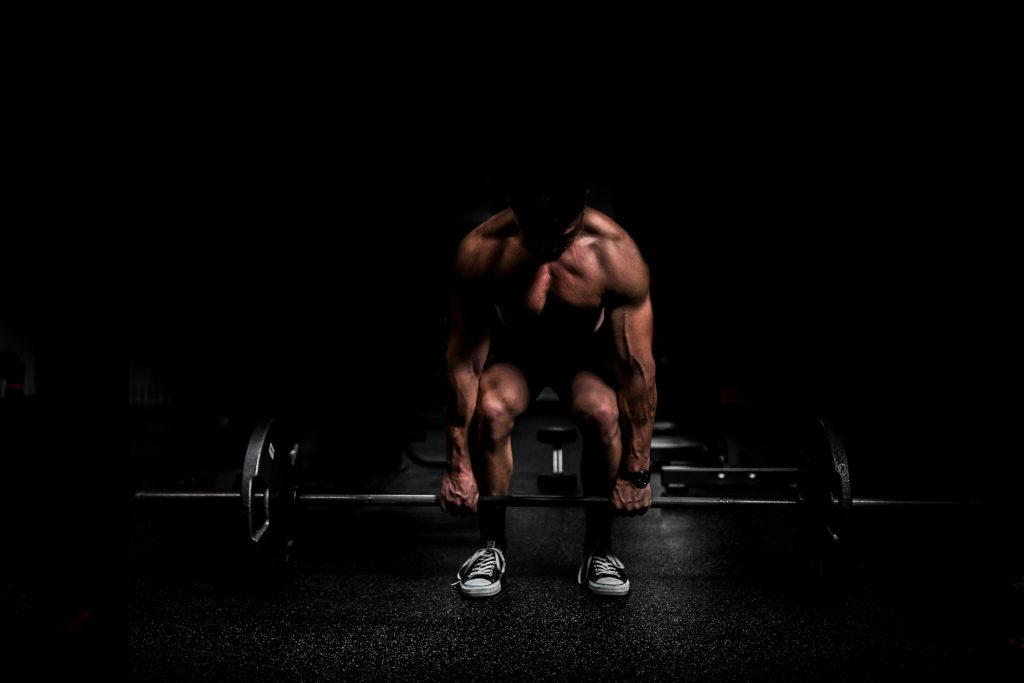
In the world of strength training, timing is everything. When you introduce specific deadlift accessory exercises into your training regimen can make a world of difference in your overall performance. Let’s dive into how you can strategically time these exercises for maximum effect.
Deficit Deadlifts and Paused Deadlifts
At the start of your training cycle, focusing on the bottom phase of the deadlift is crucial. This is where you’re generating the initial power to move the bar off the ground. Incorporating exercises like deficit deadlifts and paused deadlifts can significantly strengthen this phase.
But why early in the cycle? It’s all about building a strong foundation. With a solid start, the rest of the lift naturally becomes more manageable.
Rack Pulls and Weighted Hyperextensions
As you move closer to competition or a personal max test, your focus should shift towards perfecting the lockout. This is the final act of your deadlift performance, where all your hard work pays off. Exercises like rack pulls and weighted hyperextensions become your best friends, helping to refine your technique and ensure you can power through to new personal records with confidence.
Deadlift Accessory Exercises for Lifters With Long Limbs
For those of you who are taller or have longer limbs, the conventional deadlift might feel like fitting a square peg into a round hole. Your unique body structure presents specific challenges but also offers unique advantages if you know how to exploit them.
Sumo Deadlifts
The sumo deadlift can be a game-changer for lifters with long limbs. By allowing a wider stance, it reduces the distance you need to move the bar, making the lift more efficient for your body type. But there’s more to it than just a wider stance. Sumo deadlifts also require and develop significant hip strength, turning a potential weak point into a powerhouse.
Block Pulls
Block pulls are another excellent choice for those with long limbs. By starting the lift from an elevated position, you effectively reduce the range of motion, making it easier to maintain proper form throughout the lift. This can be particularly beneficial during the mid to top phase of the deadlift, where long-limbed lifters often struggle.
Understanding the best time to implement these accessory exercises and adapting them to your body type can transform your deadlift from a challenging endeavor into a showcase of your strength and skill.
Whether you’re laying the foundation in the early stages of your training or polishing your technique for competition, the right accessory exercises can elevate your performance.
Tackling Mobility for Maximum Lift Efficiency
Mobility isn’t just about being able to touch your toes; it’s a critical component of executing a powerful and safe deadlift. A lack of mobility, especially in the hips, can hinder your ability to perform the deadlift with correct form, potentially leading to injury and limiting your lifting potential.
Dynamic Stretches and Mobility Drills
Incorporating dynamic stretches and mobility drills into your routine can significantly improve your flexibility and range of motion. Exercises like lunges with a twist and leg swings open up your hips and prepare your body for the demands of deadlifting.
Goblet Squats
Goblet squats are not just a strength exercise; they’re a masterclass in hip mobility. Holding a weight in front of you forces your body to maintain an upright posture, teaching you the proper hip hinge technique essential for a good deadlift. Plus, they enhance flexibility throughout your lower body, making them a non-negotiable part of your mobility work.
Other Ideal Deadlifts Accessory Exercises to Try

Deficit Deadlifts
Starting your lift from a deficit can sound intimidating, but it’s one of the best ways to strengthen the crucial initial phase of your deadlift. By standing on an elevated surface, you’re forced to lift from a lower position, increasing the range of motion and targeting the muscles responsible for getting the bar off the ground.
Jumping straight into a significant deficit is a recipe for trouble. Instead, start small and gradually increase the deficit as your strength and technique improve. This method ensures you’re building power without compromising on form.
Front Squats
Front squats do more than just strengthen your quads; they reinforce the entire bottom phase of the deadlift. By shifting the weight to the front of your body, you’re not only working on leg strength but also improving your core stability—a critical factor in maintaining proper deadlift form.
Integrating front squats into your routine translates directly to a stronger initial pull in the deadlift. The upright posture required in front squats mirrors the ideal deadlift setup, ensuring your body is primed for both exercises.
Banded Deadlifts
Banded deadlifts introduce a unique challenge by adding progressive resistance. As you lift the bar higher, the tension increases, forcing you to push harder through the mid to top phases of the deadlift.
This variation is not just about overcoming sticking points; it’s about building explosive power and ensuring your glutes and hamstrings are fully engaged. The result? A deadlift that feels smoother and stronger from start to finish.
Rack Pulls
Rack pulls allow you to focus on the final phase of the deadlift, helping you to handle heavier weights and strengthen your grip, back, and lockout ability. By starting the lift from just above or below the knee, you can hone in on the mechanics of finishing strong.
With the ability to load more weight than a conventional deadlift, rack pulls are an invaluable tool for improving your lockout strength, ensuring you can complete every deadlift with confidence.
Hip Thrusts
When it comes to building glute strength, hip thrusts are unrivaled. These exercises target your glutes in a way that few others can, making them essential for anyone looking to improve their deadlift.
Stronger glutes mean a stronger drive upwards in the deadlift, especially during the lockout phase. Incorporating hip thrusts into your routine promises not just significant gains in your deadlift numbers but also a more powerful, efficient lift overall.
Conclusion
Incorporating deadlift accessory exercises into your training is not just beneficial; it’s essential for breaking through plateaus, correcting imbalances, and achieving new personal bests. By understanding and targeting your weaknesses with specific exercises, you can build a stronger, more efficient deadlift.
Remember, the key to success lies in the details. Fine-tuning your approach with the right accessory work can unlock levels of strength and performance you never thought possible.
Key Points
- Incorporating exercises like the weighted cat/cow can address specific weaknesses, such as upper back rounding, and improve overall deadlift technique and strength.
- Accessory exercises should be integrated into your regular strength training routine, following a sequence of warm-up, primary lift, accessory lifts, and cool-down for optimal results.
- The essential equipment for deadlifting includes a barbell, bumper plates, and bar collars, making it an accessible exercise for both gym and home settings.
- The necessity of deadlifts depends on individual fitness goals. While beneficial for strength and functional movement, they are not compulsory, especially for those focused on body composition.
- Incorporating dynamic stretches and mobility drills, especially for those with hip mobility issues, can significantly improve deadlift form and effectiveness.
- These exercises target the initial phase of the deadlift, strengthening the bottom part of the lift and improving quad strength and core stability.
- Banded deadlifts add progressive resistance, while rack pulls focus on improving the lockout phase, both essential for overcoming sticking points and enhancing overall performance.
- Directly targeting the glutes, hip thrusts are key for driving the bar up effectively, especially in the lockout phase, leading to significant gains in deadlift numbers.
- Exercises like sumo deadlifts and block pulls can offer strategic advantages for those with longer limbs, reducing the range of motion and leveraging natural build for efficiency.
FAQs
What Accessory Exercises Are Used for Deadlifts?
A variety of accessory exercises can complement your deadlift training, each targeting different aspects of the lift. One particularly effective exercise is the weighted cat/cow.
This exercise is beneficial for improving the flexibility and strength of your upper back, especially if you notice your upper back rounding at the start of your deadlift. Incorporating the weighted cat/cow into your training program can address this issue without being overly taxing on your body.
When Should I Do Deadlift Accessories?
Deadlift accessory exercises should be seamlessly integrated into your regular strength training routine. A well-structured session typically includes a warm-up, the primary exercise (in this case, the deadlift), accessory lifts, and a cool-down.
Accessory lifts are crucial for targeting and strengthening individual and small muscle groups, helping you to increase your numbers in your primary exercises. They are designed to complement your main lifts and should be performed consistently as part of your overall training plan.
What Equipment Do You Need for Deadlifts?
Deadlifting doesn’t require a vast array of equipment. At its core, you only need a few essentials: a barbell, bumper plates, and a pair of bar collars.
This minimal setup is sufficient for a robust strength workout, making deadlifts a convenient and effective exercise that can be performed in a variety of settings, from fully-equipped gyms to more minimalist home workout spaces.
Are Deadlifts a Necessary Exercise?
Deadlifts are not a mandatory exercise for everyone. While they are a staple in powerlifting and offer numerous benefits, including strength gains and improved functional movement, their necessity depends on your personal fitness goals.
If your aim is to improve body composition, it’s essential to find exercises that suit your preferences, needs, and physical condition. No single exercise, including deadlifts, is indispensable. The key is to build a workout routine that is effective, enjoyable, and tailored to your specific goals.

ABOUT THE AUTHOR
Follow Valen Steven for a dose of fitness enthusiasm, evidence-based advice, and a roadmap to achieving your health and wellness goals.
Subscribe to our Newsletter
Dive into a world of fitness and wellness with our exclusive newsletter! Sign up now and receive weekly power-packs of fitness wisdom

